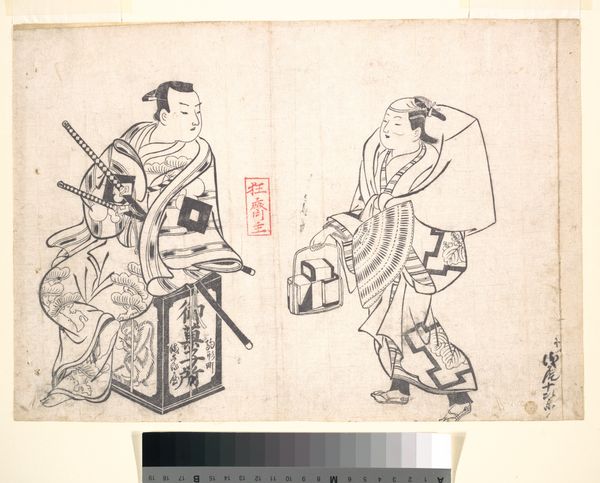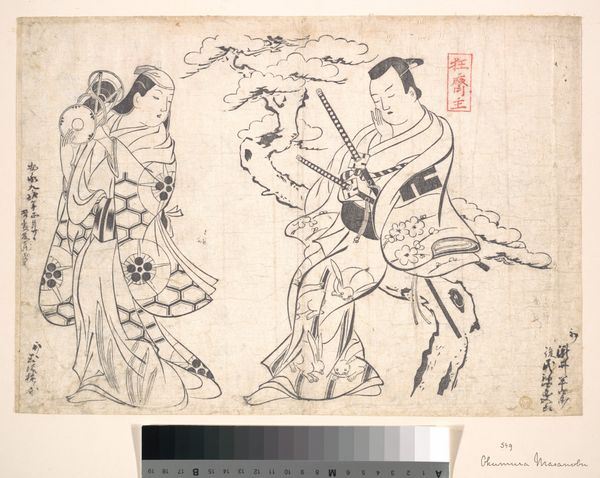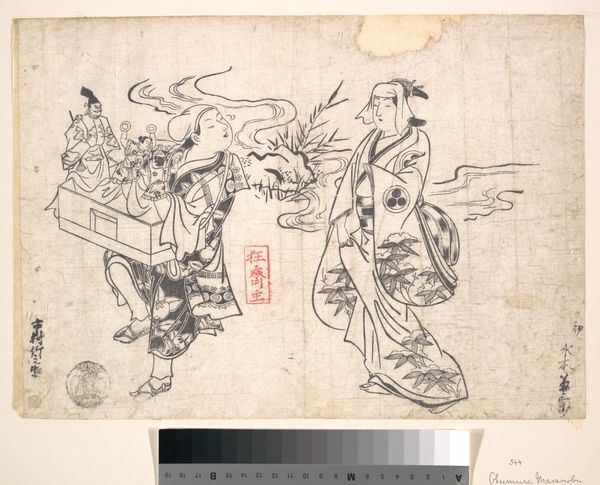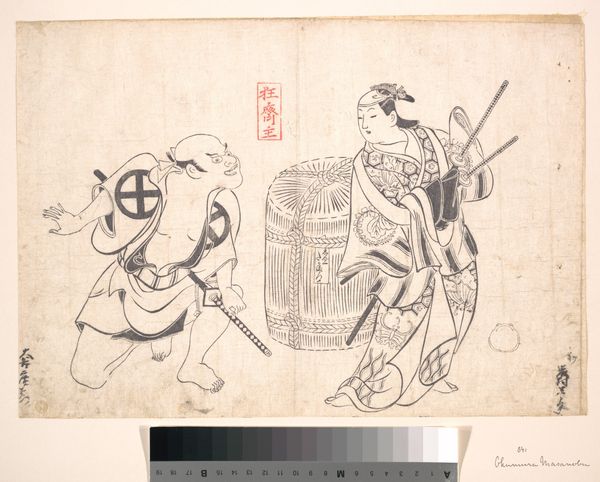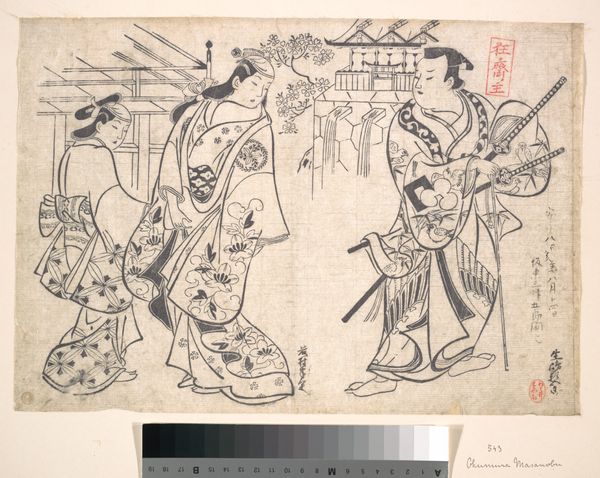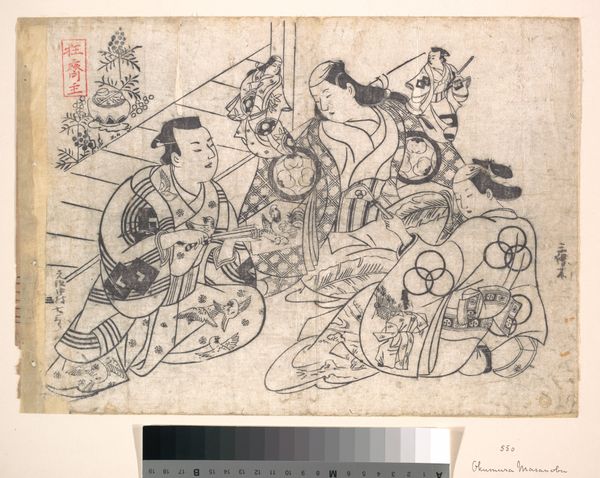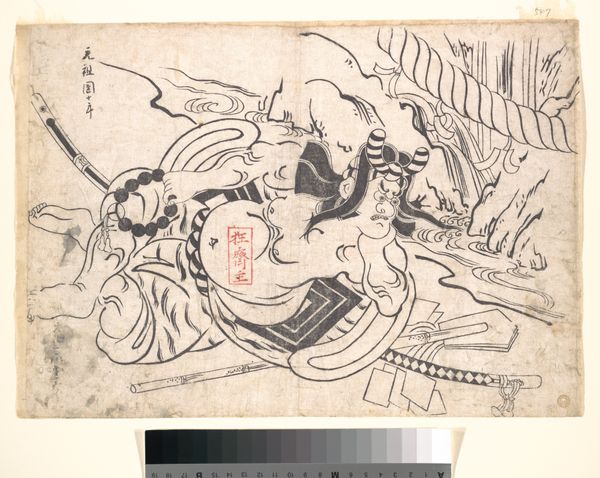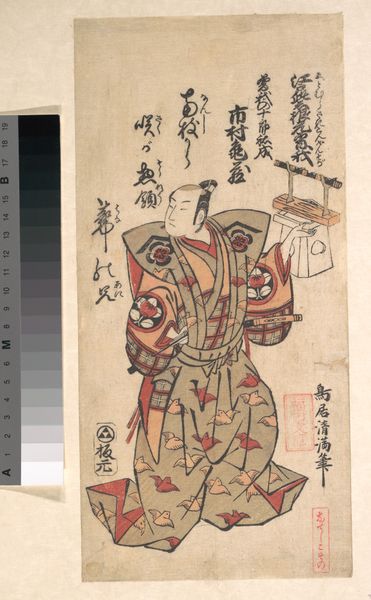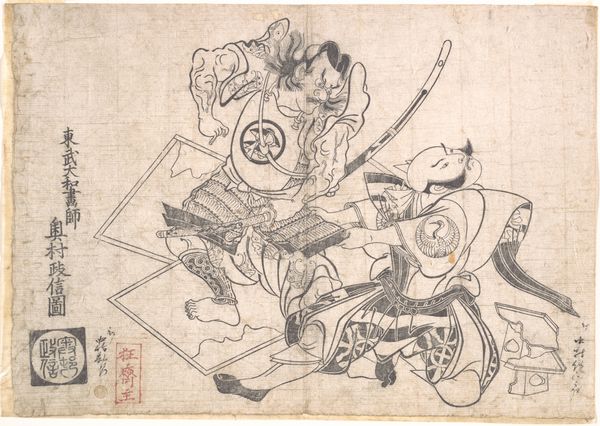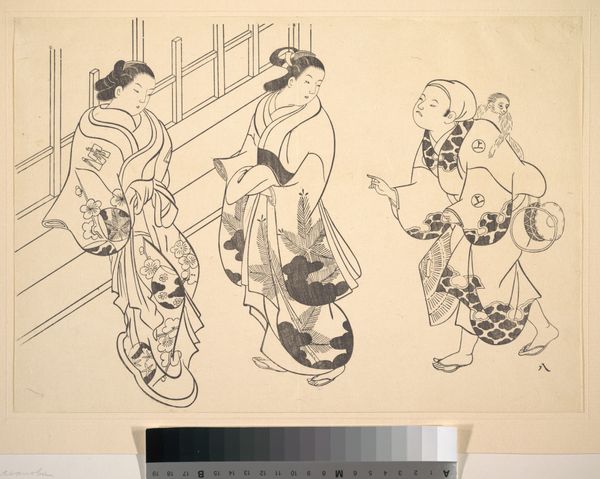
The Mogusa-uri Scene from the Drama "Chujo-hime Hibariyama," Performed at Yamamura-za 1710 - 1713
0:00
0:00
print, woodcut
#
narrative-art
# print
#
asian-art
#
ukiyo-e
#
figuration
#
woodcut
Dimensions: 10 3/8 x 14 3/4 in. (26.4 x 37.5 cm)
Copyright: Public Domain
Curator: Okumura Masanobu created this striking woodcut print titled "The Mogusa-uri Scene from the Drama 'Chujo-hime Hibariyama,' Performed at Yamamura-za" sometime between 1710 and 1713. It depicts a scene from a play popular at the time. Editor: My first impression is one of theatrical energy, though it's all rendered in rather austere lines. The color feels absent, focusing attention on form and line work. Is this typical of early woodblock prints? Curator: Yes, early ukiyo-e prints like this were often monochrome, with color added later, initially by hand. Masanobu was actually a pioneer in developing color printing techniques, so it is interesting that he rendered this artwork without them. The print is depicting a popular drama performed at the Yamamura-za theater in Edo, showing how closely intertwined art and popular entertainment were during the Edo period. Prints like these acted almost like theatrical posters or souvenirs. Editor: Considering it's a woodcut, I am intrigued by the varying line weights, particularly the bolder lines defining the figures' robes, versus the finer, almost wispy strokes in the facial details. How did the printmaker achieve that level of detail in this process? Curator: Woodcut printing requires careful carving, of course. The artists needed skilled artisans to translate their designs onto woodblocks. Different tools and techniques allowed for achieving variations in line thickness and texture. The process, the very materiality of the wood, influenced the aesthetic. And indeed, these prints became quite affordable so, this accessibility democratized art to a certain degree during this period, something new! Editor: Democratization through mass production - yet the aesthetic feels rather refined, not “mass produced,” even in its bold simplicity. The layering of patterns, though presented without color, indicates texture in the fabrics. Curator: Yes, exactly. Prints such as these also played a crucial role in shaping perceptions and popularizing cultural trends across different social classes. They circulated imagery and ideas throughout society. The theatrical scene itself likely provided commentary on the current events and social customs. Editor: I see it now—the print functions not only as art but also as a socio-cultural mirror. Thanks, this woodcut says a lot more than I originally understood. Curator: Indeed. Analyzing the social contexts, artistic approaches and impact is critical in appreciating such art.
Comments
No comments
Be the first to comment and join the conversation on the ultimate creative platform.
